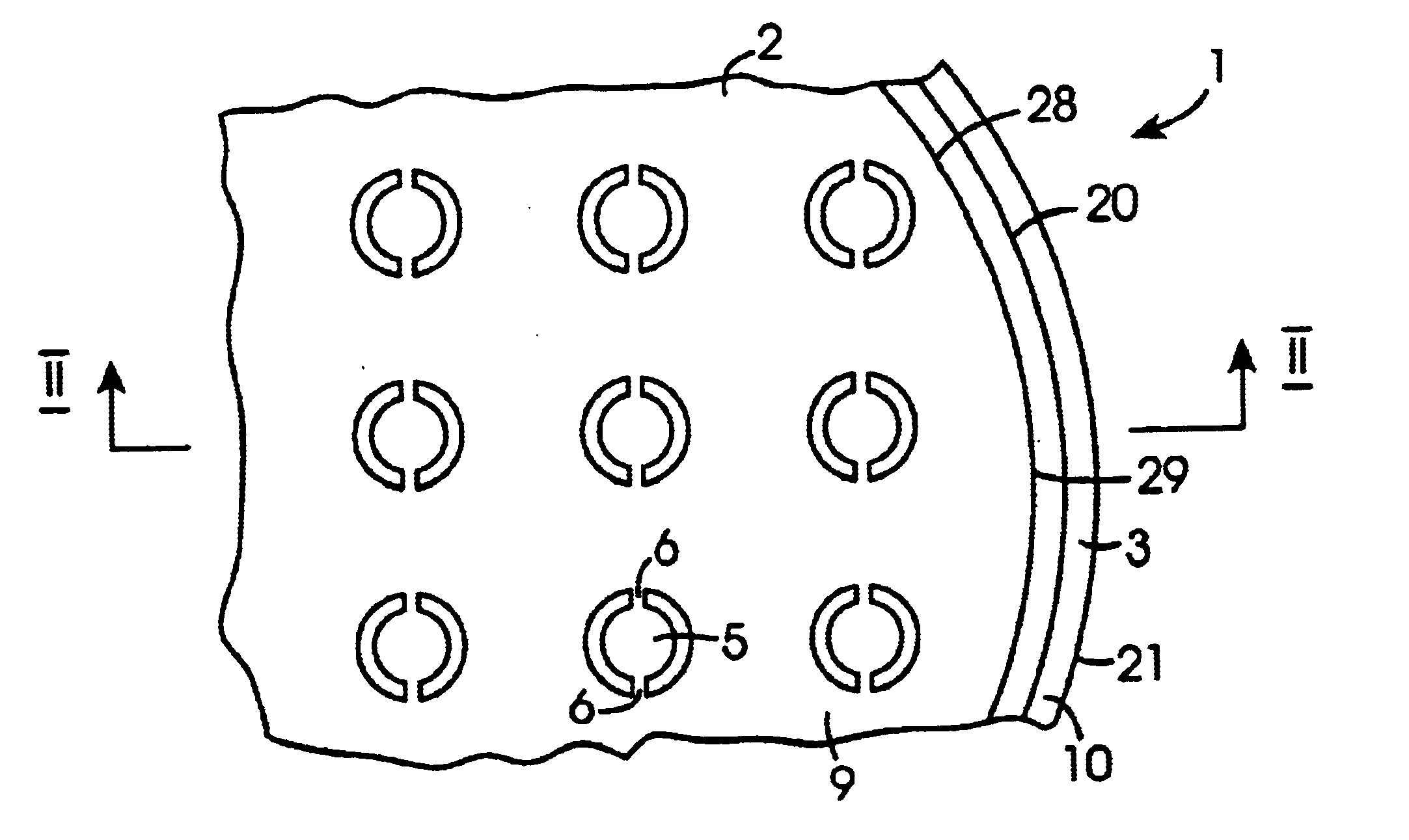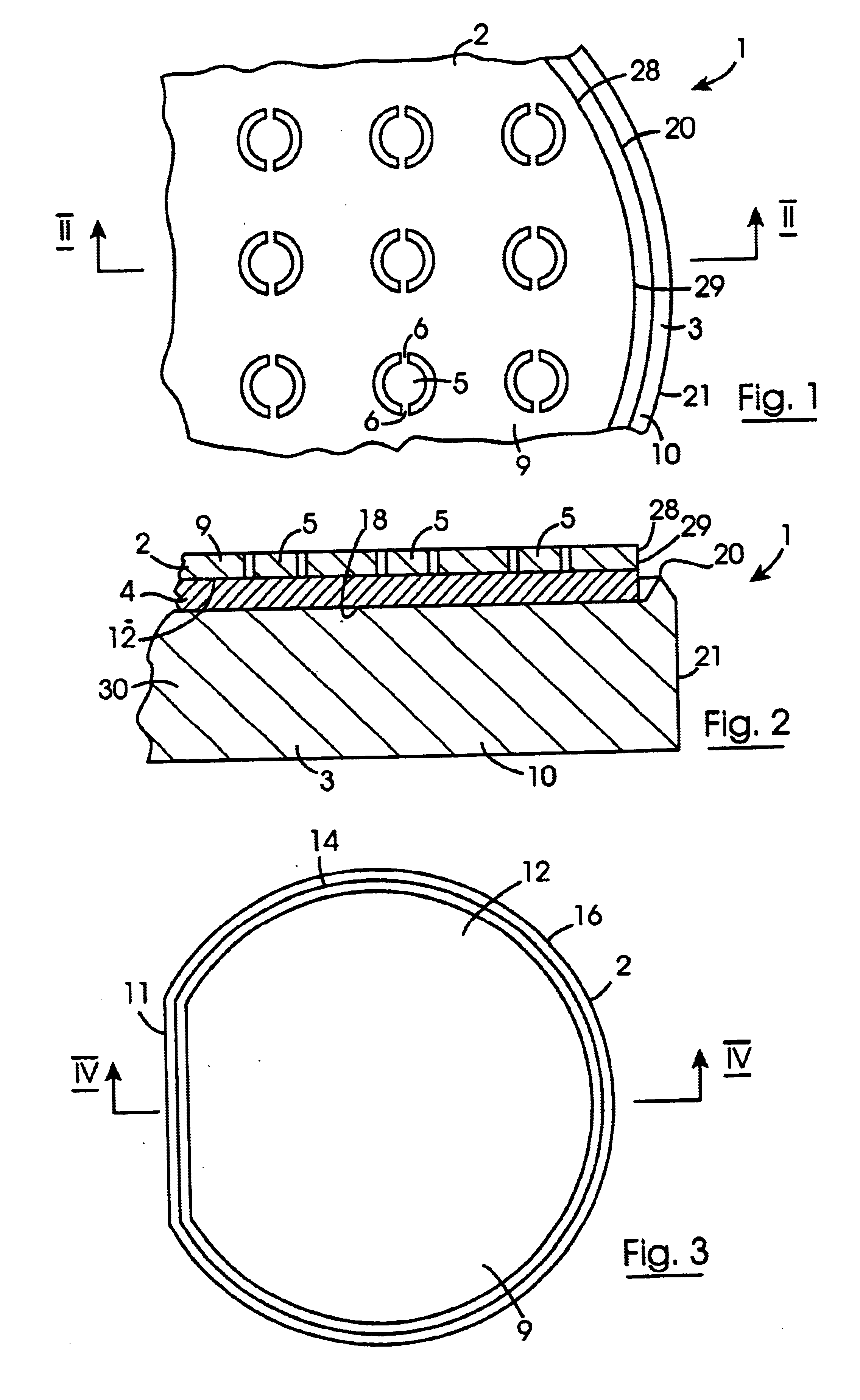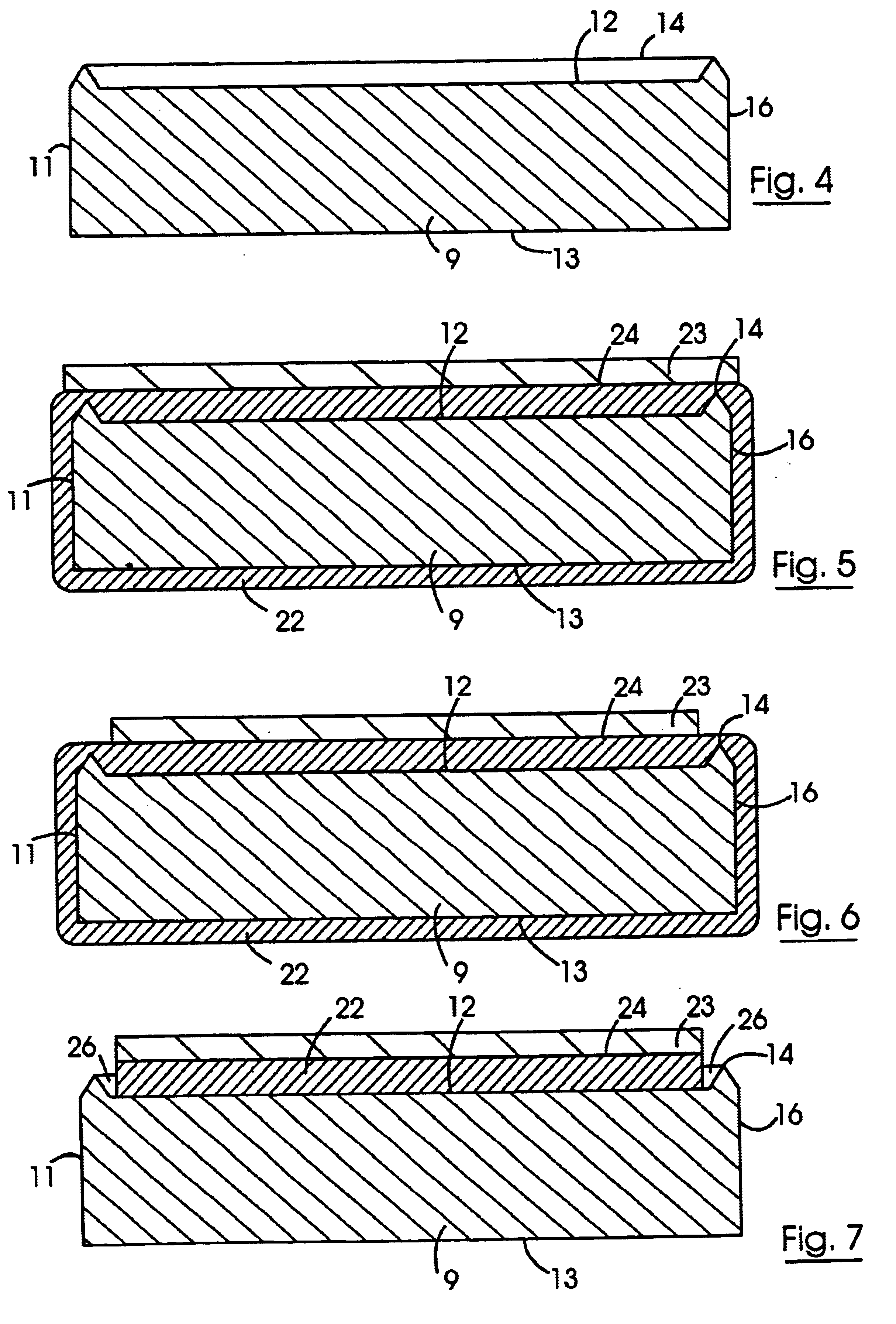Composite semiconductor wafer and a method for forming the composite semiconductor wafer
a composite semiconductor and semiconductor technology, applied in the direction of semiconductor/solid-state device details, coatings, microstructured devices, etc., can solve the problems of unsatisfactory bonding between the major surface of the wafer and the adjacent oxide layer or wafer, particle contamination of the wafer surface, manufacturing line, etc., to facilitate bonding
- Summary
- Abstract
- Description
- Claims
- Application Information
AI Technical Summary
Benefits of technology
Problems solved by technology
Method used
Image
Examples
Embodiment Construction
Referring to the drawings, which are not to scale, and initially to FIGS. 1 and 2, there is illustrated a composite semiconductor wafer according to the invention, indicated generally by the reference numeral 1. formed by a method according to the invention. The composite wafer 1 is an SOI (silicon on insulator) and comprises a device layer 2 supported on a handle layer 3 with a buried oxide layer 4 located between the device and handle layer 2 and 3, respectively. A plurality of micro-mechanical components, in this embodiment of the invention micro-mirrors 5 are formed in the device layer 2 and are tiltably connected to the device layer 2 by tethers 6. Bores (not shown) would typically be etched through the handle layer 3 and the buried oxide layer 4 for accommodating electrodes to the micro-mirrors 5 for tilting thereof. The arrangement and formation of such bores and micro-mirrors in a device layer of a composite wafer will be well known to those skilled in the art.
Referring now ...
PUM
| Property | Measurement | Unit |
|---|---|---|
| thickness | aaaaa | aaaaa |
| thickness | aaaaa | aaaaa |
| thickness | aaaaa | aaaaa |
Abstract
Description
Claims
Application Information
 Login to View More
Login to View More - R&D
- Intellectual Property
- Life Sciences
- Materials
- Tech Scout
- Unparalleled Data Quality
- Higher Quality Content
- 60% Fewer Hallucinations
Browse by: Latest US Patents, China's latest patents, Technical Efficacy Thesaurus, Application Domain, Technology Topic, Popular Technical Reports.
© 2025 PatSnap. All rights reserved.Legal|Privacy policy|Modern Slavery Act Transparency Statement|Sitemap|About US| Contact US: help@patsnap.com



